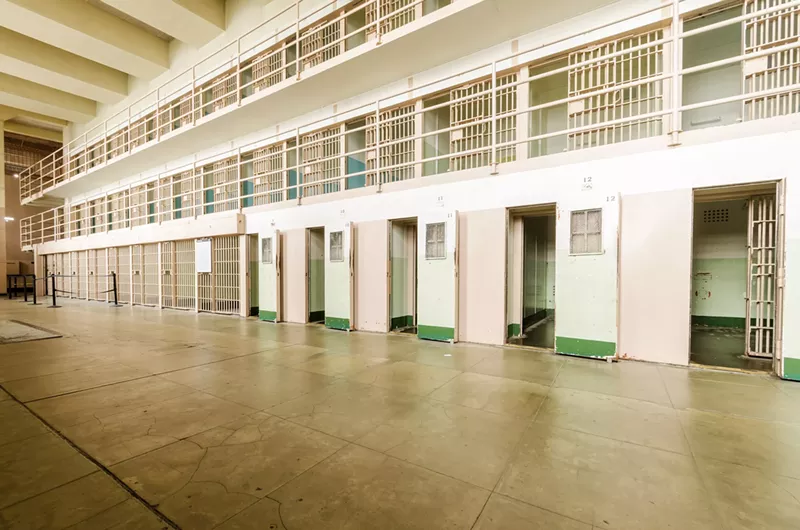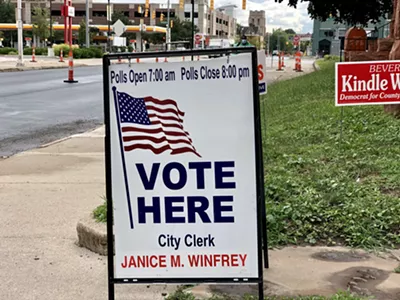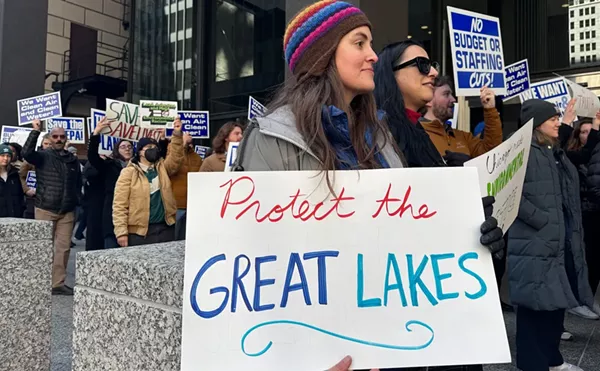
As the new SARS-CoV-2 variant, omicron, surges across the country, and as boosters become available, we cannot continue to neglect the wellbeing and safety of incarcerated people. The care of incarcerated populations must be a top priority for federal, state, and local policymakers. In the beginning of the COVID-19 pandemic, criminal justice advocates warned about the jails and prisons becoming pandemic hotspots. Public health officials persistently suggested several approaches Department of Corrections (DOCs) should take as a response to the pandemic. It has been almost two years into the pandemic, and no state has given a sufficient response. We continue to uphold the idea and practice that incarcerated people do not deserve basic health care because they are indebted to society.
The WHO reported the newly identified omicron variant in November 2021. By Dec. 1, 2021, the first case of omicron was identified. Since then, infections with the omicron variant have increased exponentially. At the time of this writing, the CDC reports that omicron variant accounts for 58.6% of the coronavirus variants circulating in the U.S., surpassing the delta variant at 41.1%. On Dec. 28, 2021, the seven-day average for COVID-19 cases in the U.S. is up to 50% from the previous week. Moreover, hospitalization rates have also increased by 15%, with Washington, D.C., observing a rise in new hospitalizations of more than 86%. Although these statistics have been thoroughly discussed in various media sources, what is missing is the conversation on the populations that continue to be disproportionally impacted by the emergence of new variants and the high infection rates.
Since the beginning of the pandemic, corrections facilities across the U.S. have reported more than 450,000 cases and a cumulative 6,990 coronavirus-related deaths among incarcerated people. Michigan currently leads the case rate for incarcerated people with 76 cases per 100 persons, nine times the rate of the entire state. The Prison Policy Initiative reveals that over the course of almost two years, there have been moderate rates of decarceration. By the end of 2020, numerous state prisons were reported to be at 90% capacity or higher.
Although considered a vulnerable population, incarcerated people were not prioritized during the early vaccine rollouts in the majority of the states. Only 55% of people in prisons have been fully vaccinated since vaccines became available to all adults in December 2020. With the surge of Omicron, we have also observed a sharp rise in cases in correctional facilities. New York’s most notorious prisons, Riker’s Island, reported 76 new positive cases within one day.
Besides the inhumane conditions of detention centers that have been extensively documented, the consequences of the pandemic like limiting family visitations, unnecessary solitary confinement, interruption of health programs, and subpar medical attention offered to incarcerated people, have all taken a toll. Precautions like wearing masks and social distancing are restricted due to lack of PPE and overcrowding. In fact, some prisons and jails are so overcrowded that three people are confined to a cell that is designed for only one person. Additionally, incarcerated people are also given a low priority in testing, which suggests that data is not being collected appropriately. A recent New York Times article identified many deaths in prisons have not been documented. The statistics included may be an underrepresentation of the true statistics. UCLA Law COVID-19 Behind Bars Data Project also provided evidence that many states, especially those with high rates of COVID-19 infections, fail to update their COVID-19 data regularly. This raises concerns about how data is being collected and why DOCs choose to offer no transparency.
How can we create effective solutions when we do not know what is going on inside prison walls? Withholding data, providing limited resources to incarcerated people, and continuing to silence their experiences is a violation of human rights. As public health officials who have worked closely with incarcerated people, we urge lawmakers and public health officials to create and implement solutions that recognize the humanity and dignity of incarcerated people and ensure their safety and wellbeing.
High vaccine hesitancy among incarcerated people is anticipated. Given the long-standing history of violence by the carceral and health care system, it is no coincidence that incarcerated people, 33% of whom are Black, are uncertain about the vaccine. Public health officials must prioritize and include incarcerated people in their vaccine distribution frameworks. This requires listening to the concerns and experiences of incarcerated people and working with community-based organizations and advocacy groups that focus on criminal justice efforts. The framework should include clear strategies on vaccine education and follow-up for incarcerated people who are released and have only received the first dose of the vaccine. For vaccines to be effective, both doses must be administered.
Moreover, decarceration efforts must continue to avoid overcrowding. Spatial strategies and PPE availability are essential in reducing transmission rates. A recent study investigating what interventions are effective in slowing transmission of COVID-19 in urban jails show that decreasing prison population, single celling, and administration of testing in jails prevented estimates cases, hospitalizations, and deaths by more than 80%. Decarceration strategies requires the power of all stakeholders including federal, state, and local legislators, activists, the medical and public health community, as well as the public, who can contribute by contacting their state’s representatives.
Our efforts should also focus on data collection and transparency. With many states lagging on reporting COVID-19 related data in prisons, public health interventions are hindered. Congresswoman Ayanna Pressley introducedthe COVID-19 in Corrections Data Transparency Act in August 2020, calling for the collection and the public reporting of COVID-19 cases, hospitalizations, and deaths in correctional facilities. So far, the bill has not moved from the House of Representatives. Solutions cannot be applied when data is not available. If we do not center incarcerated people in our interventions to slow the transmission of COVID-19, then we will continue the vicious cycle of reproducing inequitable, ineffective, and inefficient solutions. Allowing the deterioration of the conditions in prisons harms our collective health.
Robert Fullilove is the Senior Advisor to the Bard Prison Initiate on Public Health. Ira Memaj is a public health educator and scientist on community health and health policy at CUNY School of Public Health.
Stay connected with Detroit Metro Times. Subscribe to our newsletters, and follow us on Google News, Apple News, Twitter, Facebook, Instagram, or Reddit.






